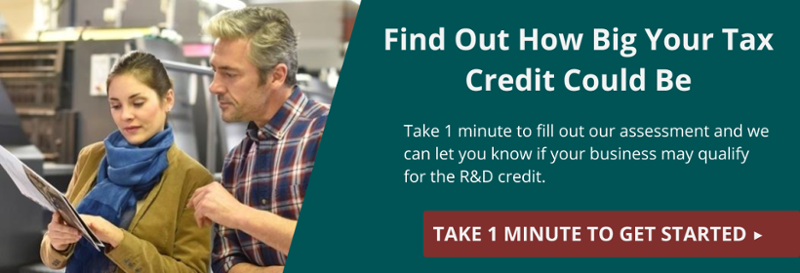
Many business leaders believe the R&D Tax Credit is reserved for big tech firms and large pharmaceutical companies. Yet this simply isn’t true. Numerous activities in a variety of different industries have the potential to qualify for the R&D Tax Credit, no matter the size of the businesses involved. This includes the food manufacturing industry. In fact, the biggest companies in the industry are all taking advantage of the R&D Tax Credit.
So what kinds of activities might a food manufacturer look at for the R&D Tax Credit? To many business leaders’ surprise, the list is extensive! Food manufacturers spend a lot of time researching and testing new products and processes – the type of activities the credit was designed to incentivize in the first place.
Here is a look at some of the food manufacturing activities that could qualify for valuable tax benefits.
- Developing recipe formulations for new products
- Developing new flavor profiles
- Improving existing formulations to extend shelf life
- Improving existing formulations to achieve specified nutritional requirements
- Improving products and processes to meet customer demands for ingredient to be "all natural" and free of colors and dyes
- Developing new production process specifications and techniques
- Developing new processes for mixing, batching sequences, and cooking temps
- Evaluating/installing new equipment and machinery
- Developing new packaging designs to provide enhanced or increased shelf life
- Producing prototype samples for testing and validation of new recipes
- Developing small batch to large batch testing validation processes
- Sourcing raw materials to meet customer requirements for health and safety
- Finding new raw materials when political, economic or natural disasters change the availability of these important raw materials
Depending on the circumstances, all of these things could be considered for a food manufacturing R&D Tax Credit. This extensive list of opportunities could all qualify for generous government incentives and food manufacturers don’t want to miss out. Food manufacturers should keep detailed documentation relating to these projects in order to use them to potentially offset state and federal tax liabilities. Of course, as with any R&D Tax Credit, they must pass the Four-Part Test.
The Four-Part Test
Once you’ve identified potential qualifying activities, run it through the four-part test to verify. The four parts of the test are:
Permitted Purpose. This is the activity intended to make or improve either a product or process that results in improved function, performance, reliability, quality or cost efficiency.
Technical Uncertainty. This is the activity intended to eliminate technical uncertainty when developing or improving a product or process related to methodology, design, techniques, formulas or inventions.
Process of Experimentation. This is the activity that includes a process of experimentation to eliminate or resolve technical uncertainty. During the process, various alternatives and approaches are evaluated by modeling, simulation, trial and error, prototyping and other methods.
Technological in Nature. The process of experimentation must rely on the hard sciences (engineering, physics, biology, chemistry, computer science).
The R&D Tax Credit can be complicated. Always check with an expert who can help you uncover opportunities and navigate the process.





